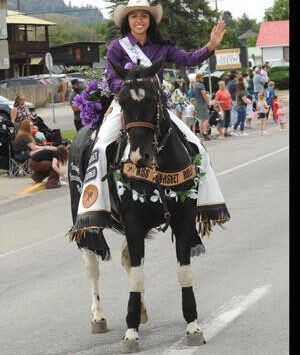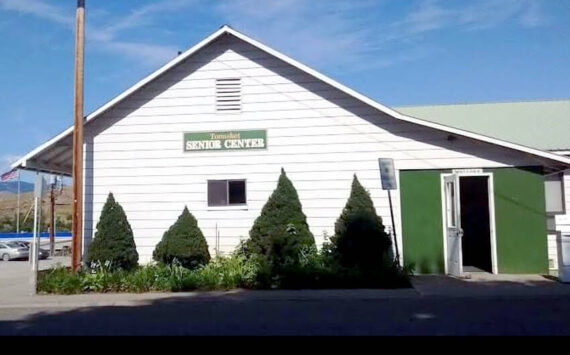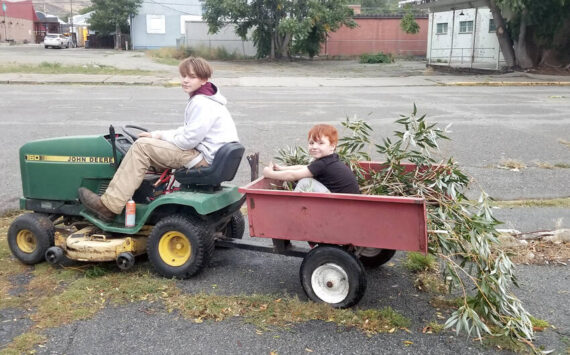TONASKET – The Washington Department of Fish and Wildlife (WDF&W) Police received a call about a cougar treed by a dog on Seventh Street in Tonasket Thursday, May 20.
Sargent Dan Christensen said the dog’s owner heard his dog barking, and noticed the cougar in the tree around 4 a.m. He saw it jump down and head up Highway 20 about 20 minutes later.
Christensen said WDF&W police officer Troy McCormick responded to the call, and notified both school and police about the incident. The area the cougar was in is close to a trail used by students to access the school from Seventh Street.
“We will obviously continue to monitor the area,” said Christensen, adding that a sighting was just a sighting; not necessarily a danger.
“The good sign is, the cat went up the tree instead of becoming aggressive with the dog,” he said. “If people want to be concerned for their kids’ safety, there are a lot more dangerous things to worry about, such as the sex offender hanging out at The Junction a couple weeks ago.”
Christensen said both he and McCormick were part of the community, with kids attending the Tonasket schools; so they, too, were invested in monitoring the area.
According to Christensen, there’s only been three recorded fatalities from cougars in Washington since we became a state and only one was from a cat in the wild; the other two got killed by cougars they were keeping as “pets.”
“He could be just passing through. It’s a really dry year, so the critters are going to go to the water, and Bonaparte Creek is right along Seventh Street,” said Christensen, adding that the biggest killer of cats is other cats; and with all the domestic cats roaming the area, it becomes a bit of a “McDonald’s for cougars.”
Christensen said cougars generally roam a 150-square mile radius; with one male, three females and their offspring occupying the same area.
“The good habitat is taken over by the big, experienced male cats; so we generally see the young and inexperienced cats in marginal areas close to people,” he said.
Tonasket Elementary School Principal Jeremy Clark said police would have “a visible presence in the neighborhood through dismissal time” on May 20, and the school district put out a public service announcement on the radio. Clark also advised parents and staff to review the ‘Encountering a Cougar’ release from the state.
Christensen, who said nine out of ten calls are not legitimate, advised people sighting cougars to call the Washington State Patrol at 509-422-3800.
Ssome things to remember in case of an encounter:
• Stop, pick up small children immediately, and don’t run. Running and rapid movements may trigger an attack.
Remember, at close range, a cougar’s instinct is to chase.
• Face the cougar. Talk to it firmly while slowly backing away. Always leave the animal an escape route.
• Try to appear larger than the cougar. Get above it (e.g., step up onto a rock or stump). If wearing a jacket, hold it open to further increase your apparent size. If you are in a group, stand shoulder-to- shoulder to appear intimidating.
• Do not take your eyes off the cougar or turn your back. Do not crouch down or try to hide.
• Never approach the cougar, especially if it is near a kill or with kittens, and never offer it food.
• If the cougar does not flee, be more assertive. If it shows signs of aggression (crouches with ears back, teeth bared, hissing, tail twitching, and hind feet pumping in preparation to jump), shout, wave your arms and throw anything you have available (water bottle, book, backpack). The idea is to convince the cougar that you are not prey, but a potential danger.
• If the cougar attacks, fight back. Be aggressive and try to stay on your feet. Cougars have been driven away by people who have fought back using anything within reach, including sticks, rocks, shovels, backpacks, and clothing-even bare hands. If you are aggressive enough, a cougar will flee, realizing it has made a mistake. Pepper spray in the cougar’s face is also effective in the extreme unlikelihood of a close encounter with a cougar.
More information can be found at http://wdfw.wa.gov/living/cougars.pdf




